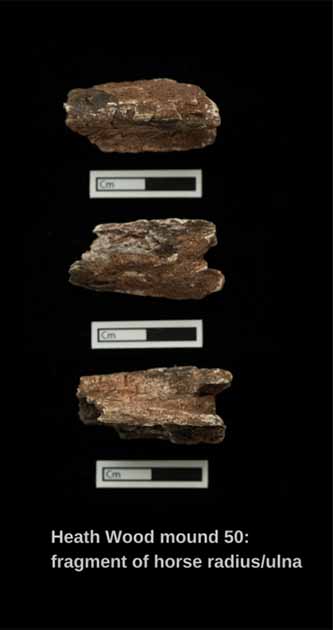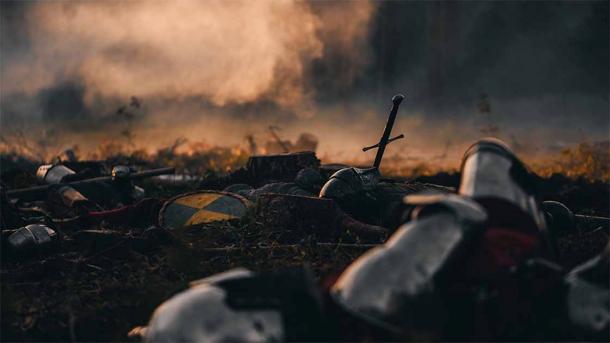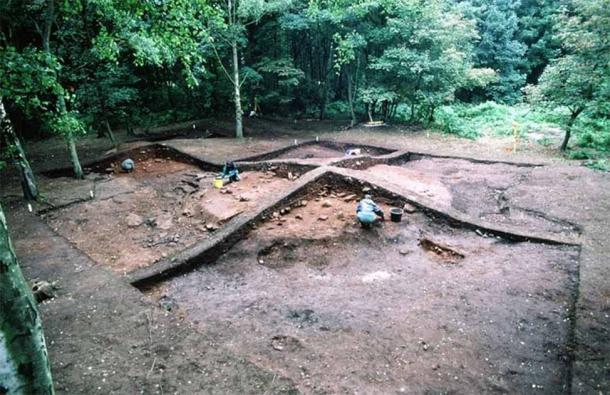
New Insights into the Viking Great Army: Cremation Site Unveils Surprising Details
The Viking warriors who invaded England in the late ninth century have long been a topic of fascination for historians and archaeologists alike. Now, a team of British and Belgian scientists have uncovered new and intriguing details about these legendary fighters through analysis of human and animal remains found at a Viking cremation site in central England.
The team of British and Belgian scientists has just completed an advanced chemical analysis of materials collected from the Viking cremation and burial site in central England near the village of Repton, Derbyshire. As of now, this is the only Viking cremation site ever found in the British Isles.
The results of this research, plus supporting archaeological work, shows that the people buried at the site were likely affiliated with the Viking Great Army that invaded and occupied parts of modern-day United Kingdom in the late ninth century.
- Talk Like a Viking! 10 Everyday English Words with Old Norse Origins
- The Great Heathen Army: Viking Coalition Becomes an Anglo-Saxon Nightmare
The Viking site identified as Heath Wood “is a unique Scandinavian cremation cemetery which features 59 mounds that dates to a period by which Christianity had been firmly established in England,” the scientists wrote in a PLOS One article introducing the results of their research. They note that by this time inhumation or conventional burial had become the norm in the Christian church, showing that the cremation cemetery was clearly an import from outside the country.
The inclusion of the animals in the burial mounds found at the cemetery was also notable. This discovery offers the first concrete evidence that invading Viking armies brought horses, dogs and pigs with them on the warships that carried them across the North Sea to the British Isles in the early medieval period.

Fragment of cremated bone from the horse unearthed at the Viking cremation burial site. (Löffelmann et al. / PLOS ONE)
Viking Cremation Reveals Details About Viking Warriors in Central England
Another interesting find during this Viking cremation research is that the skeletal samples analyzed came from a mixture of people from different ethnic backgrounds and geographical areas. While some of the people cremated and buried in the cemetery were from Scandinavia, others came from the region around Repton.
This shows that the Vikings were more than willing to accept locals that wanted to join their ranks. Experts have concluded that this could be proof that the Viking Great Armies were cosmopolitan units of fighting men from different regions of Europe.
It was in 865 that the Viking Great Army launched its full-scale invasion of the British Isles, an action that represented a clear and severe departure from their previous hit-and-run plundering up and down Britain’s North Sea coast.
After their initial landing in East Anglia, a historical land unit of eastern England that included the modern-day counties of Norfolk and Suffolk, the Vikings penetrated further into the interior of the country. They engaged in armed battles with the various Anglo-Saxon kingdoms that ruled different sections of the British Isles at that time. Viking tactics at this time changed from simple plunder to outright land seizure, as they sought to establish political authority and a permanent presence in Britain.

The evidence shows that Vikings experienced serious setbacks when fighting Anglo-Saxon forces during their invasion of the British Isles. (Gorodenkoff / Adobe Stock)
The Costs of Setting Up Camp in Anglo-Saxon Britain
The Heath Wood cemetery outside Repton was apparently associated with a Viking army winter camp, which a historic document known as the Anglo-Saxon Chronicle reveals was set up in the area over the winter of 873 to 874 AD. This was one of a series of such camps the Scandinavian forces built and occupied on British territory during this time period, although this is the first of these installations to be built alongside a cremation and burial ground.
If the Viking army was carrying many ill or wounded men when they arrived at Repton, that would explain why they needed a cemetery of this sort. And indeed, a 2018 study revealed that over 300 broken and battered bodies found in a mass grave in Derbyshire had in fact all belonged to the Viking Great Army, showing that the Vikings had experienced some serious setbacks while fighting Anglo-Saxon forces in this region.
Out of the 59 mounds that have been discovered at the Heath Wood site, approximately 20 were excavated between the 1940s and the early 2000s. Most produced cremated remains, and for the purposes of this new study the scientists obtained skeletal samples from three people and three animals (a dog, horse and pig) that had been dug up between 1998 and 2000 and had been kept at a museum in Derby ever since.
While skeletal remains from this Viking cremation cemetery were collected long ago, only radiocarbon dating testing had been performed so far. This showed that the people buried there lived between the eighth and 10th centuries.

One of 59 barrow graves believed to be of the Viking Great Army cemetery in Heath Wood depicted in a photo from2006. (Richards, J.D. / Historic England)
Pinpointing the Skeletal Remains Viking Cremation
In the new study the British and Belgian archaeologists applied a highly-developed form of a technique known as strontium isotope analysis. Strontium is a chemical element that can be found in the soil and water and is absorbed both by plants and by the animals that eat those plants. Humans that eat these plants and animals will then absorb the strontium isotopes into their bones and teeth, and those isotopes can be preserved in their skeletal remains for an indefinite period.
With the latest advances in strontium isotope analysis, it is possible to record the exact chemical signature of the strontium found inside skeletons recovered during archaeological explorations, such as the ones conducted of these Viking cremations. It is also possible to measure the precise chemical properties of the isotopes found in plants that grow in any region. By comparing the strontium isotope values of skeletal remains with those of plants from the area, scientists can tell whether or not the skeletons belonged to people who had lived there for a long time.
Equipped with this sophisticated testing technology, the British and Belgian scientists calculated the strontium isotope values of cremated femur and cranium bone fragments that belonged to three humans and three animals removed from two burial mounds. They also measured the isotopes from plant species taken from within a 15-mile (25-kilometer) radius of Heath Wood, for the purposes of their comparison.
What their tests showed is that two of the humans whose remains were discovered at the Viking cremation site had in fact lived in that area for a long time. But the other person and the horse, dog and pig had all had come from elsewhere. Eventually they were able to trace the strontium isotope signatures in the cremated bone fragments of this person and these animals to far-off Scandinavia, specifically to the lands of the Baltic Shield (Norway and central and northern Sweden).
“The strontium data presented here suggests that there are people and animals with different mobility histories buried at Heath Wood, and that—should they have belonged to the Great Army—this war band was composed of people from different parts of Scandinavia and/or the British Isles.”
In support of the thesis that the Health Wood cemetery was used by the Viking army, excavations in the burial mounds unearthed pieces of Viking swords and shields, plus dress accessories that would have been worn by Viking soldiers. Even more significantly, in the Anglo-Saxon Chronicle it flat-out states that the Viking Great Army left Lindsey in the region of modern Lincolnshire in the autumn of 873 and migrated to Repton to spend the winter.

A Viking invasion as depicted in the painting “Viking Armada” by Edward Moran. (Public domain)
Viking Invaders Came on Two Legs and Four
Other Viking sites in Europe and even in the British Isles have produced evidence that Viking armies included individuals born outside of Scandinavia. So the discovery that they were recruiting men from Derbyshire during their English occupation is not a surprise.
What was surprising, however, was the revelation that the animals that were cremated and buried along the cremated bodies of humans at Heath Wood had come from Scandinavia and not from England.
- Record UK Drought Exposes Ancient Sunken Village and Bridge
- King Aelle and the Blood Eagle: Ritual Sacrifice in Viking Age Britain
It has always been believed that Vikings armies in the early medieval period collected animals from local sources, because of the inconveniences associated with carrying animals on long voyages across the North Sea. But now it is clear that at least some animals were carried along on Viking ships, perhaps as pets or as a ready food source, or so that Viking military leaders would be able to ride their favorite horses during mounted military expeditions.
Given the relative scarcity of authentic Viking archaeological sites found on British soil, scientists will continue to study the cremated remains and other items collected from the extraordinary site at Heath Wood. Until further searches find the equivalent, this site will remain a unique and uniquely remarkable discovery.
Top image: Vikings woman with horse, the Norse invaders brought their animals with them. Source: selenit / Adobe Stock
By Nathan Falde
















Comments
Sounds more like a massacre, where the dead were thrown into a pit, burned, then covered up.
Nobody gets paid to tell the truth.